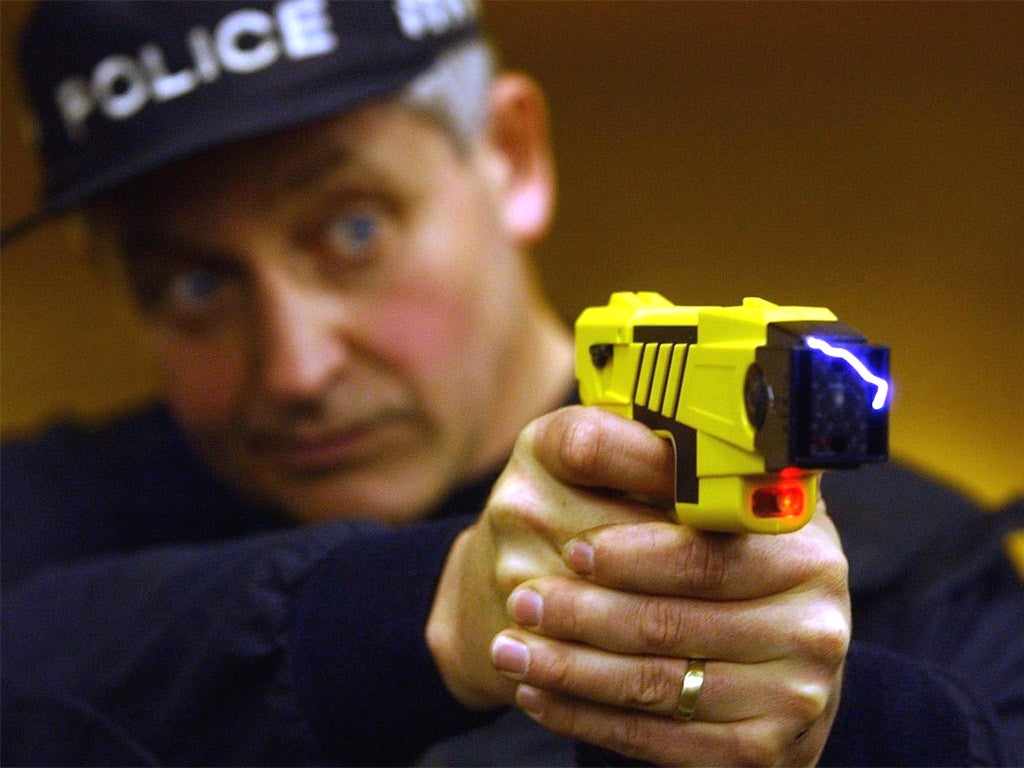Police Taser use more than doubles in two years
Use of the controversial stun guns has more than doubled in two years

Use of stun guns by police officers in England and Wales has more than doubled over two years, according to official figures
Incidence of Taser use has risen from 3,128 deployments in 2009 to 6,649 in 2010 and 7,877 in 2011, the Home Office has revealed - a rise of 4,749.
However, the percentage of instances when an officer's Taser does not make contact with a suspect, such as when it is drawn and aimed so a laser red dot is placed on the subject, has remained between 72 per cent and 75 per cent.
Tasers first came into general use by police forces in England and Wales in 2004. After a trial in five forces, the controversial stun guns were okayed for use by authorised firearms officers in all police forces.
Since then, there have been a number of controversial cases involving use of the stun guns. Blind pensioner Colin Farmer was hit with one in Chorley, Lancashire, last year, when an officer mistook his white stick for a samurai sword.
In 2009, 23 per cent of Taser deployments involved the stun gun being fired, as opposed to just drawn, while this dropped to 20 per cent in 2010 and then rose slightly to 21 per cent in 2011.
Kate Allen, director of Amnesty International UK, warned that stun guns are 'not a modern truncheon' and said only small numbers of officers should be trained in their use.
She said: "The increasing roll-out of Tasers across the UK is a grave concern. Amnesty International is worried about every bobby on the beat having a Taser on their belt - it's not a modern truncheon.
"A Taser doesn't just give a little tingle - it's a potentially lethal 50,000-volt weapon and should not be spoken of as some sort of 'natural progression' of the standard policing kit."
In April this year Andrew Pimlott died after being burned when he doused himself in flammable liquid and was then hit by a Taser outside his Plymouth home.
Solicitor Jules Carey, who represents a number of clients taking legal action over stun gun use, said the range and volume of weapons available to police has risen consistently since 1995, despite falling crime.
He said: "It is not merely the size of the police arsenals that are of concern to the public, it's a general lack of confidence in police officers using the weapons appropriately, or having the judgment to assess what constitutes a proportionate response.
"Tasers are serious weapons and are not always 'less-than-lethal' as originally intended. They should never be used in routine policing - for instance, to make restraint easier.
"They should only be deployed in the most serious of situations, if necessary and as an alternative to lethal force."
But the president of the Police Superintendents' Association, Irene Curtis, said that stun guns can mean fewer officers and members of the public are hurt.
"It is not a surprise that the number of deployments has increased because the number of people with access to Tasers has increased in that time," she said.
"A Taser used appropriately can reduce the amount of time that officers need to have off because it reduces injuries. It reduces harm to the public because if there's a dangerous individual, they can be restrained more quickly."
Subscribe to Independent Premium to bookmark this article
Want to bookmark your favourite articles and stories to read or reference later? Start your Independent Premium subscription today.

Join our commenting forum
Join thought-provoking conversations, follow other Independent readers and see their replies